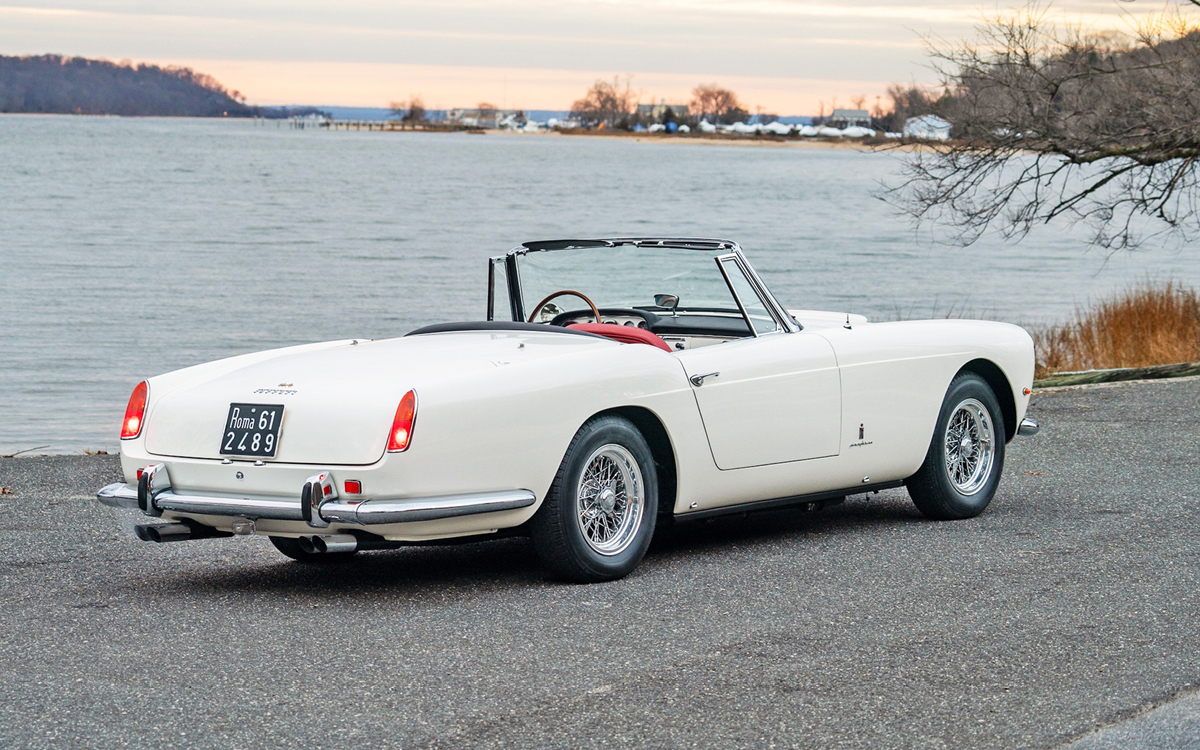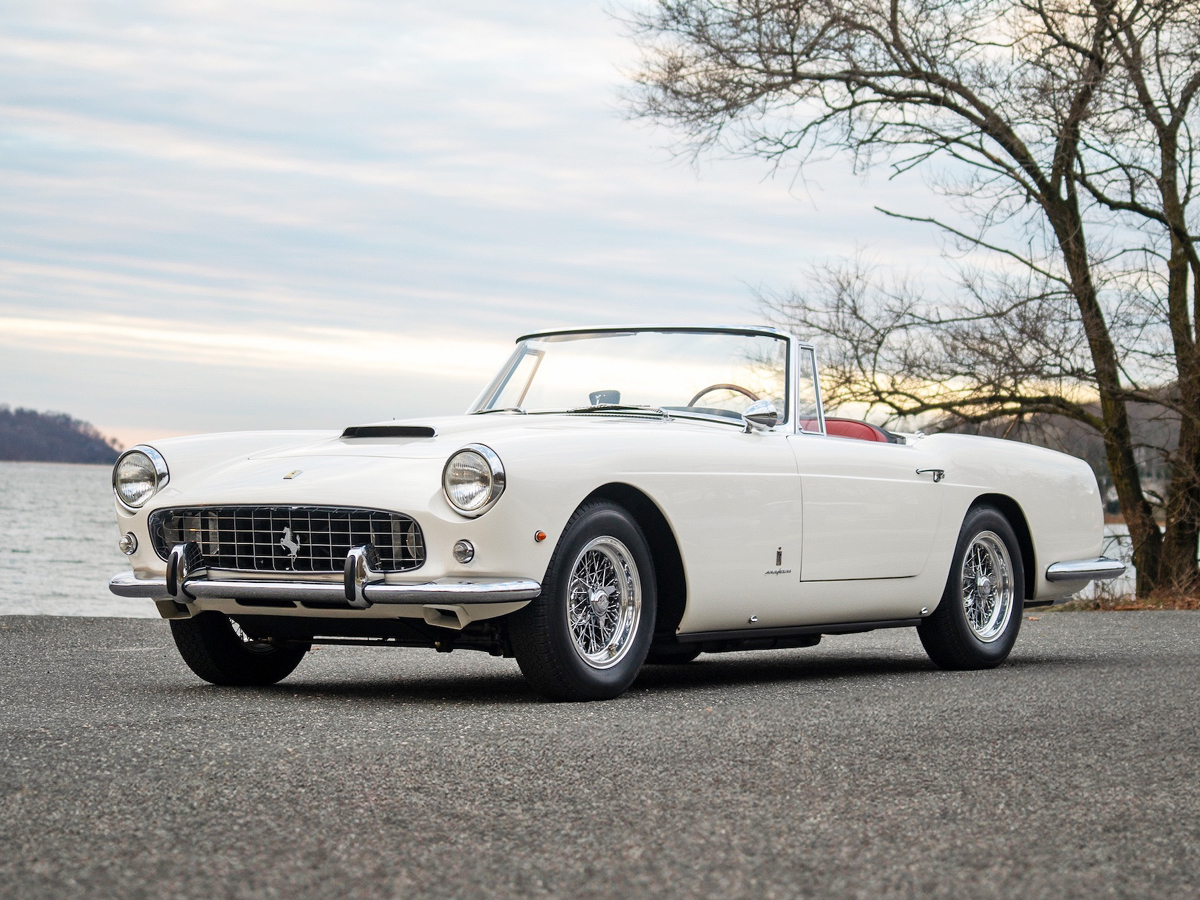An Open Ferrari 250 GT Stunner
If you mention a rare, open Ferrari 250 GT from the late 1950s until early 1960s, chances are pretty good someone may think of the Spider California. Perhaps we could attribute that to millions of people outside the automotive circle first learning about the California Spider from a certain movie about a precocious teenage boy who engineers an elaborate plan to play hooky from school with friends.
But this is not that car. Ferrari already had an open two-seat 250 GT Cabriolet at the time the California Spider arrived. Both models were built on the 102.3-inch wheelbase chassis, and both used a powerful 3.0-liter V12 engine. There were critical differences between the two, but to make sure customers got the point, Ferrari instilled the pair with greater differentiation for 1960.
The 1961 Ferrari 250 GT Cabriolet Series II offered by the RM Sotheby’s Phoenix, Arizona auction on January 25 exemplifies this model’s elegance and exclusivity. It also underscores Ferrari’s historically intrinsic talent of pleasing different pools of clients with two distinct but related cars. The restored Ferrari, which has a trophy case of awards, has a pre-sale estimate of $1.5M-$1.75M.
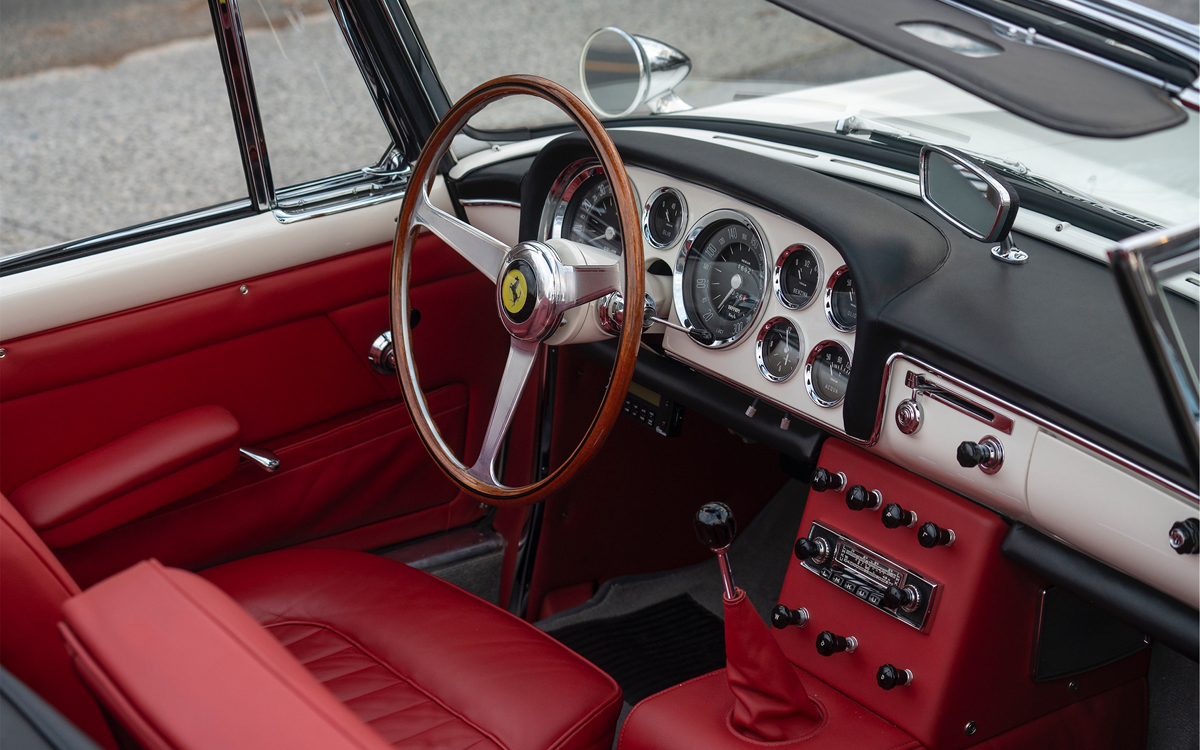
California Dreaming
Certain Ferraris seem to capture more spotlights than others, and that certainly seems to be the case for the 250 GT California Spider. Nobody should complain about that, as such attention is good for the marque and all the cars under its umbrella. This legendary car was built in two distinct series: from 1957-1959, and then 1960-1962 on a shorter-wheelbase chassis.
The first-series California Spider (1957-1959) could be viewed as a more sporting version of the first-series 250 GT Cabriolet, which, with just 40 made, was slightly rarer than the California. Aimed at more performance-focused drivers, the California was lighter than the Cabriolet, and its V12 was tuned to give 20 horsepower more.
Both cars were designed by Pininfarina, with some feeling the California showed a bit more of a sporting air. The second-series 250 GT Cabriolet would take a different tack.
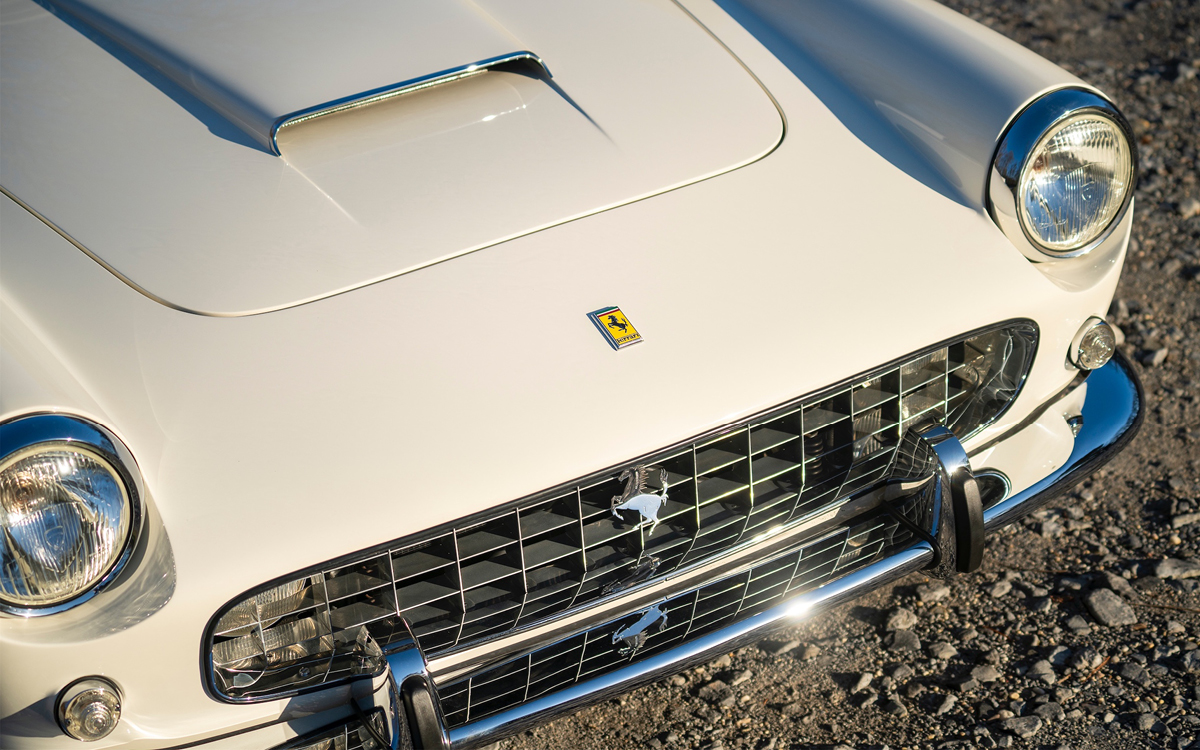
Less Racy, More Comfy
Debuting at the 1959 Paris Auto Salon, the 1960 Ferrari 250 GT Cabriolet Series II remained on the 102.3-inch wheelbase, while the second-series California Spider moved to the 98-inch wheelbase of the 250 GT SWB. Pininfarina, which designed and would also build the new Cabriolet’s body, adopted the softer, more elegant lines of the 250 GT Coupe already in production. “Less racy” might be a good way of distinguishing it from the California Spider.
Customers liked what they saw. Then, as now, not everyone who wanted a Ferrari preferred something that looks and behaves like a track car. So, maybe think of the 250 GT Cabriolet Series II as the Roma Spider of its day.
The rounded nose featured exposed headlights and a wide “egg crate” style grille. The profile retained a gentle kick-up for the rear quarters, as on the first-series model. Taillights were more upright than before. In truth, the overall look was similar to the period’s Maserati 3500 Spider by Vignale. And, it seems fair to say that MG designers took at least a little bit of inspiration for their 1963 MGB roadster.
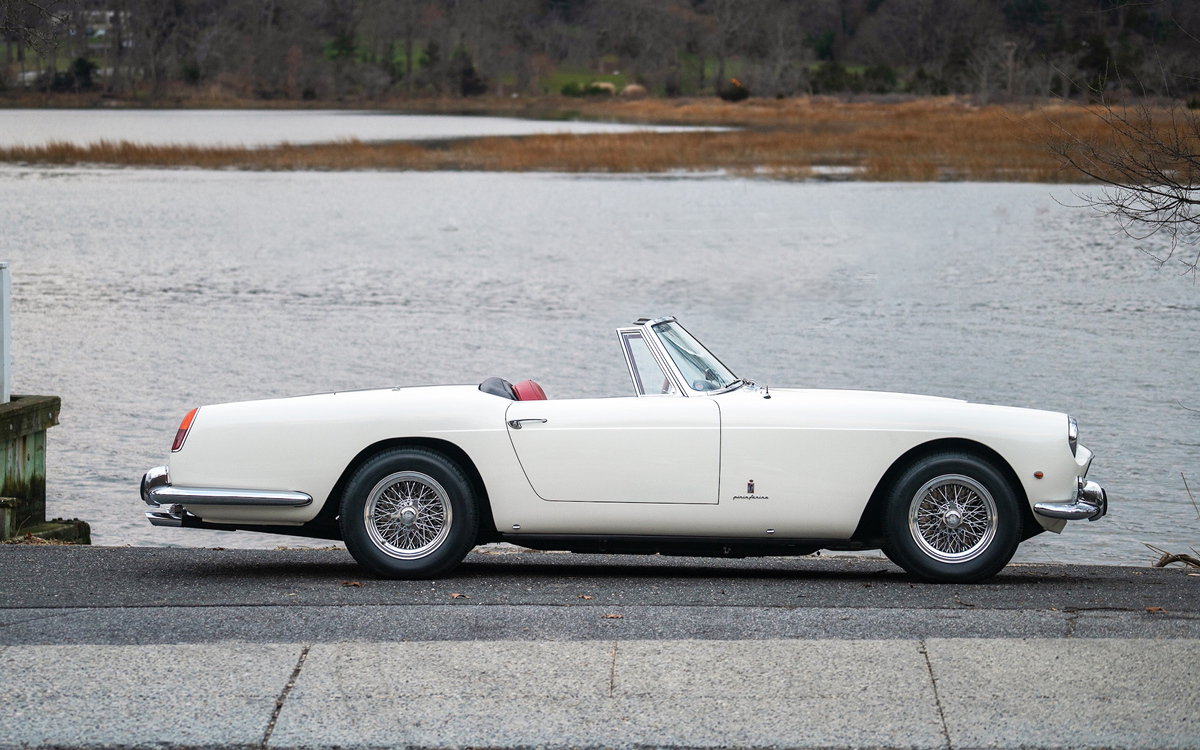
Finding Its Niche
The 250 GT Cabriolet Series II showed some improvements under the body, with later models getting four-wheel disc brakes, the 128F “outside plug” engine for easier maintenance, and overdrive for the four-speed manual transmission. There was still no air conditioning on the menu, but the luxurious-feeling cabin offered a bit more room than before, and the trunk was slightly larger. The optional detachable hardtop made the new Cabriolet a good, fast all-season tourer.
The 250 GT Cabriolet Series II was rated at 240 horsepower, same as standard in the second-series California Spider. The smaller California weighed a claimed 300 pounds less than the Cabriolet, though, so there would have been a noticeable difference between the two in overall performance and handling. Each car found its niche and success, and each enjoys a unique spotlight today.
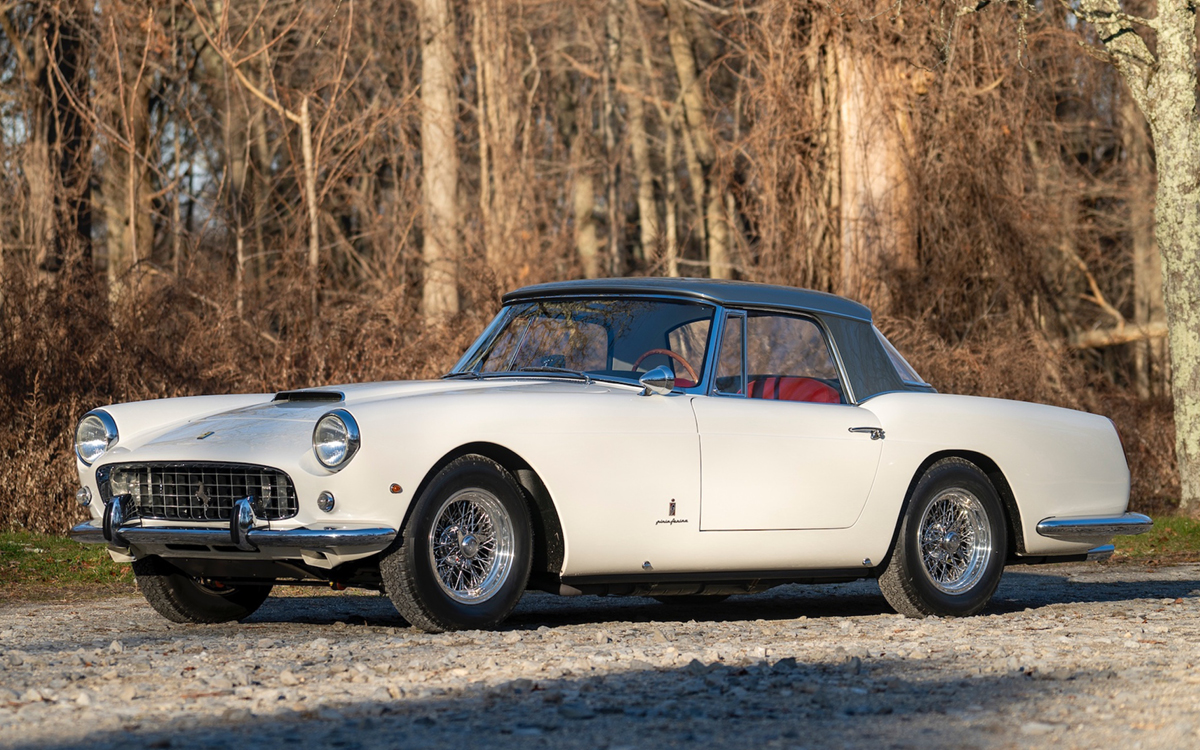
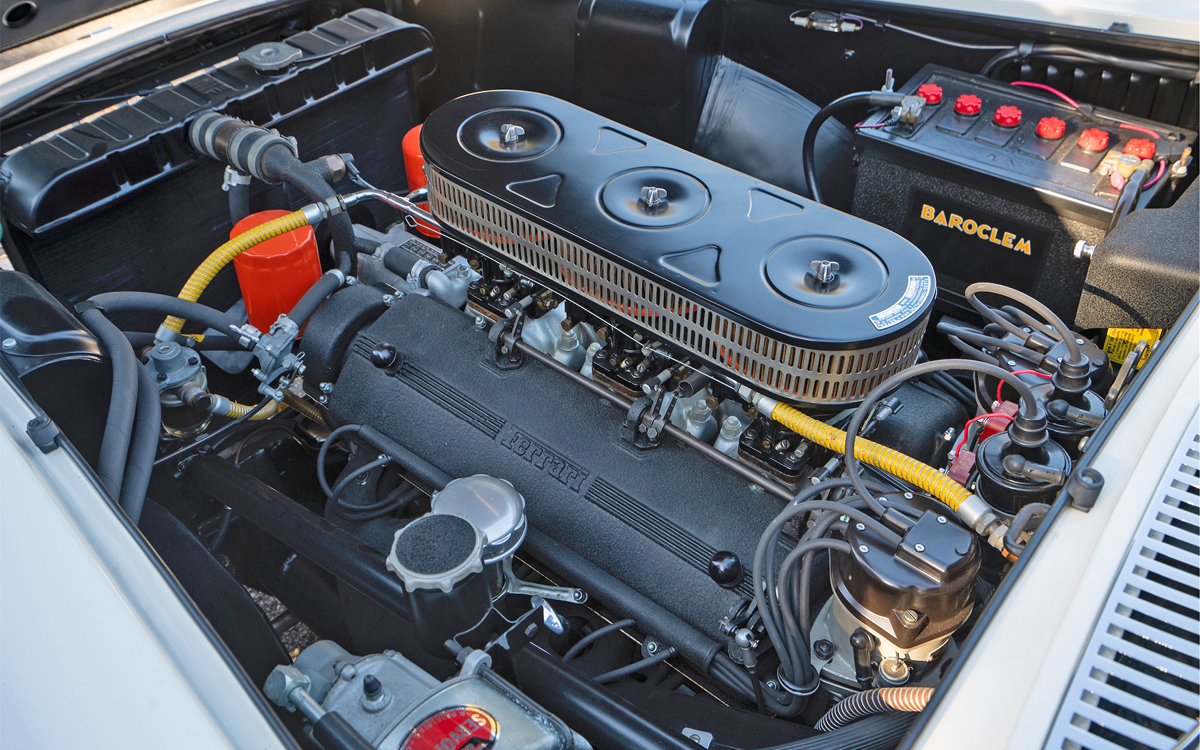
Concours Star
The 250 GT Cabriolet Series II offered by RM Sotheby’s has been confirmed as the 124th of 200 built. The car shows a high level of reverence and care from a string of six indicated owners. It retains its numbers-matching engine, transmission, and rear axle, as documented in its Ferrari Classiche Red Book.
The car’s fourth owner was also its first in the U.S. A well-known Florida-based collector, he commissioned a ground-up restoration by The Creative Workshop in Dania Beach, which took two years to complete. The exterior color was changed from the original Amaranto Roma (a rose color) to white, and the interior from tan to red. The hardtop became silver. The car picked up Silver and Gold Awards at the Cavallino Classic in 2006 and 2007, respectively, beginning a long string of awards to come. The next owner had marque specialists Vintage Motorsports in Malvern, Pennsylvania rebuild the matching-numbers V12 engine, including the installation of new pistons, cylinder liners, bearings, and timing chain. That should make this Ferrari ready for more showing and touring … and winning more trophies, too.
